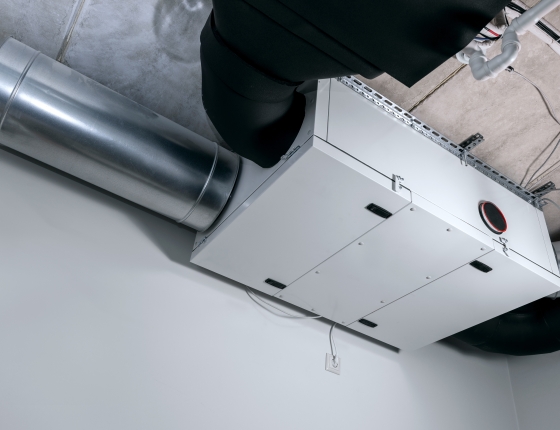Overview
A previous CARD study of commercial energy recovery ventilator (ERV) systems installed before 2014 found that of the nine systems studied, three were initially non-functional while three more had operational issues with minor performance impacts. Many of the operational problems were related to the fact that ERVs were a new and unfamiliar technology to designers, mechanical contractors, controls contractors, and building operators. Effective use of ERVs is important to achieve energy savings goals. ERVs were identified as the top commercial natural gas savings measure in a 2018 CARD potential study, accounting for 16% of commercial natural gas savings potential from 2020–2029. The energy and peak demand reduction potential of ERVs is well understood, particularly in Minnesota where the energy and demand reduction potential of ERVs was thoroughly characterized in a previous CARD study. A protocol to identify underperforming ERVs and prescriptively address the root causes of operational issues could help deliver these expected savings.
For this project, the research staff will work closely with vendors, building owners, and ECO staff to gain a current, comprehensive understanding of market and technical issues related to the proposed ERV tune-up service. We will combine this understanding with lessons learned from a previous ERV CARD study to develop a protocol that contractors can use to quickly identify and correct the most common, energy intensive operational problems of commercial ERVs, especially in those that were installed prior to 2014. This protocol will be implemented in at least 10 buildings and 20 ERVs while pre- and post-tune-up operations data will be used to evaluate energy and demand impacts. The results will be used to estimate potential statewide impact, refine the protocol, develop ECO recommendations, and develop TRM recommendations.
Project Summary
Objective
- Develop and field-test an innovative, low-cost protocol to optimize the operation of ERV systems in existing buildings.
- Develop a service model for contractors to correct common ERV operating problems.
Scope
- Assess existing building ERVs and ventilation systems performance in at least ten buildings.
- Correct operational issues and quantify impact on at least 20 systems.
Non-energy benefits
- In the winter, using existing ERVs to pre-condition ventilation air as much as possible reduces onsite combustion of fuels, which reduces local greenhouse gas emissions and improves local air quality.
- In the summer, ERVs can help reduce peak electricity demand.
- Developing a targeted ERV tune-up service gives building owners and operators more options for affordable ways to simultaneously reduce operating costs and environmental impact.
